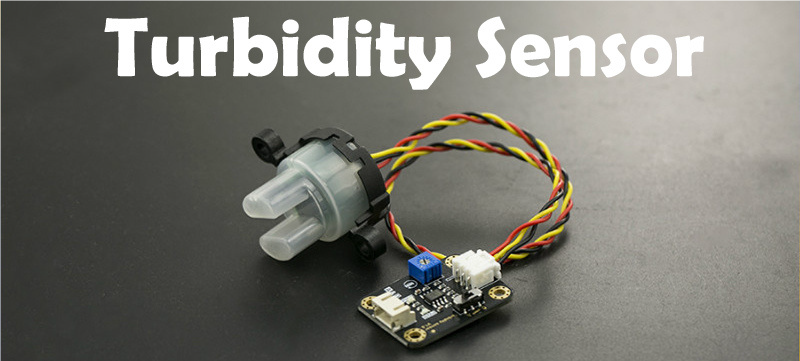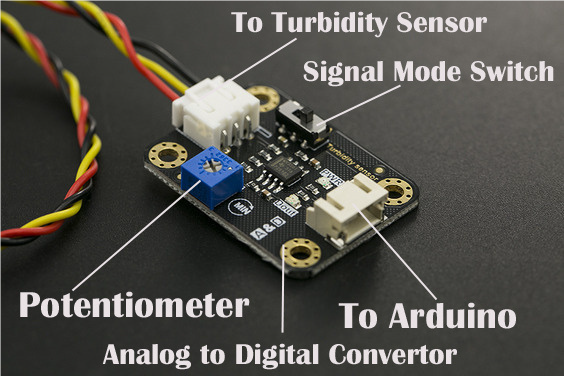Detect the Water Quality
Aim of the Experiment:
To detect the quality of water using a Turbidity sensor.
Description:
In this tutorial, we’re going to be looking into this turbidity sensor released by DFrobot. We will be making a low-cost water turbidity meter based on the Arduino, Turbidity Sensor. This mechanism is relatively simple as light will be blocked by particles suspending in the liquid.
The turbidity can be measured by detecting the amount of light going through the liquid sample.
The turbidity unit is measured in NTU “Nephelometric Turbidity Units” which is global standard. The larger the turbidity is, the cloudy of the sample is. Turbidity sensor connects to the microcontroller through an analog to digital converter through this A to D converter.

Clear water with NTU less than 0.5 gives us a voltage of around 4.1 volts.
NTU: 500
Voltage: 3.27V
NTU: 50
Voltage: 4.10V
NTU: 0.5
Voltage: 4.21V
The larger the turbidity is, the smaller this output voltage will be. The voltage ranges from 0 to4.5 volts. Under digital mode, the signal wire from the converter goes to the digital pin of the microcontroller the sensor sends out a 5v signal when turbidity reaches a threshold value. This value can be adjusted by the onboard potentiometer on the A & D converter. A turbidity sensor is often used in water quality monitoring.
Hardware Requirements:
Arduino UNO
Turbidity Sensor
Jumper wires
Breadboard

